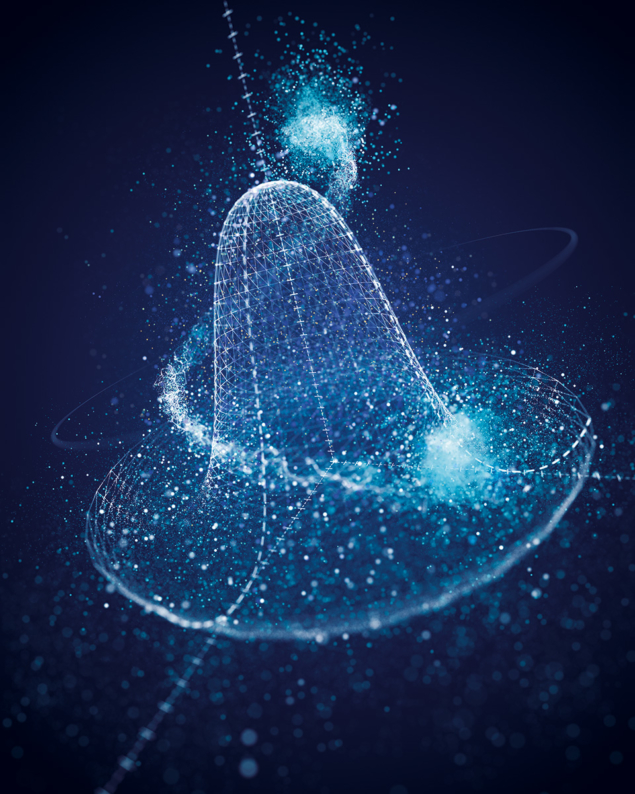
Ten years ago, a few small bumps in ATLAS and CMS data confirmed a 48 year-old theoretical prediction, and particle physics hasn’t been the same since. Behind those sigmas was the hard work, dedication, competence and team spirit of thousands of experimentalists and accelerator physicists worldwide. Naturally it was a triumph for theory, too. Peter Higgs, François Englert, Carl Hagen and Gerald Guralnik received a standing ovation in the CERN auditorium on 4 July 2012, although Higgs insisted it was a day to celebrate experiment, not theory. The Nobel prize for Englert and Higgs came a year later. Straying from tradition for elementary-particle discoveries, the citation explicitly acknowledged the experimental effort of ATLAS and CMS, the LHC and CERN.
The implications of the Higgs-boson discovery are still being understood. Ten years of precision measurements have shown the particle to be consistent with the minimal version required by the Standard Model. Combined with the no-show of non-Standard Model particles that were expected to accompany the Higgs, theorists are left scratching their heads. As we celebrate the collective effort of high-energy physicists in discovering the Higgs boson and determining its properties, another intriguing journey has opened up.
Marvelously mysterious
As “a fragment of vacuum” with the barest of quantum numbers, the Higgs boson is potentially connected to many open questions in fundamental physics. The field from which it hails governs the nature of the electroweak phase transition in the early universe, which might be connected with the observed matter–antimatter asymmetry; as the only known elementary scalar particle, it could serve as a portal to other, hidden sectors relevant to dark matter; its couplings to matter particles — representing a new interaction in nature — may hold clues to the puzzling hierarchy of fermion masses; and its interactions with itself have implications for the ultimate stability of the universe.
Nobody knows what the Higgs boson has in store
With the LHC and its high-luminosity upgrade, physicists have 20 years of Higgs exploration to look forward to. But to fully understand the shape of the Brout–Englert–Higgs potential, the couplings of the Higgs boson to Standard Model particles and its possible connections to new physics, a successor collider will be needed. It is fascinating to picture future generations of particle physicists working as one with astroparticle physicists, cosmologists, quantum technologists and others to fill out the details of this potential new vista, with colliders driving progress alongside astrophysical, cosmological and gravitational-wave observatories. Future colliders aren’t just about generating knowledge, argues Anna Panagopoulou of the European Commission, but are “moonshots” delivering a competitive edge in technology, innovation, education and training — opening adventures that inspire young people to enter science in the first place.
Nobody knows what the Higgs boson has in store. Perhaps further studies will confirm the scenario of a Standard-Model Higgs and nothing else. The sheer number and profundity of known unknowns in the universe would suggest otherwise, think theorists. The good news is that, in the Higgs boson, physicists have clear measurement targets – and in principle the necessary theoretical and experimental machinery – to explore such mysteries, building upon the events of 4 July 2012 to reach the next level of understanding in fundamental physics.








